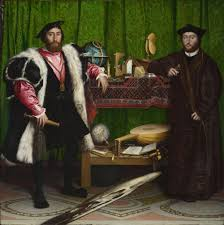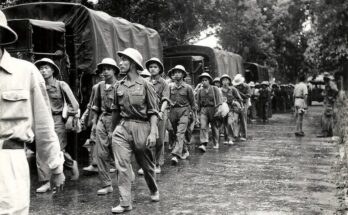Introduction
When we think of the Renaissance, images of Leonardo da Vinci’s paintings and Michelangelo’s sculptures often come to mind. However, the Renaissance was not limited to Italy. The Northern Renaissance, which flourished in countries such as the Netherlands, Germany, and France, was a distinct and transformative period that reshaped art, literature, science, and society. But how did this cultural rebirth differ from its Italian counterpart? Let’s delve into the world of the Northern Renaissance and explore its remarkable impact.
The Origins of the Northern Renaissance
Influence of the Italian Renaissance
The Renaissance movement first emerged in Italy during the 14th century, fueled by a revival of classical learning. As trade and travel increased, these ideas spread across Europe, reaching the northern regions by the late 15th century. However, unlike Italy’s emphasis on humanism and Greco-Roman heritage, the Northern Renaissance developed a unique character influenced by religious reform and a deep appreciation for detail.

The Role of the Printing Press
One of the defining catalysts of the Northern Renaissance was Johannes Gutenberg’s invention of the printing press in the mid-15th century. This revolutionary technology made books more accessible, allowing knowledge to spread rapidly. The dissemination of texts such as the Bible, classical works, and humanist literature helped shape the intellectual landscape of Northern Europe.
Key Figures of the Northern Renaissance
Albrecht Dürer: The German Leonardo
Albrecht Dürer, a German artist and printmaker, played a crucial role in the Northern Renaissance. His engravings, such as Melencolia I and Knight, Death, and the Devil, showcased his mastery of perspective and detail. Dürer’s travels to Italy influenced his work, blending Northern realism with Italian artistic principles.
Desiderius Erasmus: The Father of Humanism
A Dutch scholar, Desiderius Erasmus was a key intellectual figure of the Northern Renaissance. His book In Praise of Folly criticized the corruption of the Catholic Church, paving the way for the Reformation. Erasmus emphasized education and moral philosophy, shaping the humanist movement in Northern Europe.
Jan van Eyck: Master of Detail
Flemish painter Jan van Eyck revolutionized art with his meticulous oil painting techniques. His masterpiece, The Arnolfini Portrait, is celebrated for its realism, intricate details, and use of light. Van Eyck’s work marked a shift towards greater naturalism in Northern Renaissance art.
The Characteristics of Northern Renaissance Art
Emphasis on Detail and Realism
Unlike the idealized forms of Italian Renaissance art, Northern artists focused on extreme realism. Every wrinkle, strand of hair, and reflection in their paintings was rendered with precision, making their work incredibly lifelike.
Oil Painting Techniques
Artists in Northern Europe pioneered the use of oil paints, which allowed for richer colors and finer details. This technique provided greater depth and luminosity, setting Northern Renaissance art apart from the frescoes and tempera paintings common in Italy.
Religious Themes and Symbolism
Religious motifs remained dominant in Northern Renaissance art. However, these depictions often included complex symbolism. For instance, in The Arnolfini Portrait, the small dog symbolizes loyalty, and the reflection in the mirror suggests divine presence.
Literature and the Spread of Humanist Thought
Thomas More’s Utopia
English statesman and writer Thomas More introduced the concept of an ideal society in his book Utopia. More’s work reflected the growing humanist interest in political philosophy and social reform.
The Influence of William Shakespeare
Although Shakespeare’s works are often associated with the Elizabethan era, they were deeply influenced by Renaissance ideals. His plays explored human nature, history, and morality, echoing the themes of the Northern Renaissance.
The Connection Between the Northern Renaissance and the Reformation
Martin Luther’s 95 Theses
The intellectual climate of the Northern Renaissance laid the groundwork for the Protestant Reformation. Martin Luther, inspired by humanist scholarship, challenged the authority of the Catholic Church with his 95 Theses in 1517. His call for religious reform resonated with many who sought a more personal and scripture-based faith.
The Role of Art in the Reformation
While religious imagery remained significant, the Reformation led to a decline in church-sponsored art. Protestant regions saw a shift towards more secular and portrait painting, reflecting the changing spiritual landscape of Northern Europe.
Scientific Advancements During the Northern Renaissance
Andreas Vesalius and Anatomy
Belgian anatomist Andreas Vesalius revolutionized the study of human anatomy. His detailed illustrations in De humani corporis fabrica corrected many misconceptions held since ancient times.
The Astronomical Contributions of Copernicus
Polish astronomer Nicolaus Copernicus challenged the geocentric model of the universe with his heliocentric theory. His groundbreaking work De revolutionibus orbium coelestium laid the foundation for modern astronomy.
The Legacy of the Northern Renaissance
A Lasting Influence on Art and Culture
The techniques developed by Northern Renaissance artists influenced future movements such as the Baroque and Dutch Golden Age painting. The focus on realism and detail continues to inspire artists today.
The Enduring Impact of Humanist Thought
The emphasis on education, critical thinking, and religious reform during the Northern Renaissance shaped European society for centuries. Its legacy can be seen in modern philosophy, literature, and political thought.
IoT Applications for Real-Time Fleet Monitoring in Supply Chains
Conclusion
The Northern Renaissance was a period of profound cultural transformation that extended beyond Italy’s artistic and intellectual revival. With its emphasis on realism, religious reform, and scientific discovery, it paved the way for the modern era. From the masterpieces of Jan van Eyck to the revolutionary ideas of Erasmus and Luther, this movement left an indelible mark on history. The next time you admire a highly detailed painting or ponder a philosophical idea, remember the Northern Renaissance helped shape the world as we know it.
FAQs
1. How did the Northern Renaissance differ from the Italian Renaissance?
The Northern Renaissance emphasized realism, intricate detail, and religious reform, whereas the Italian Renaissance focused more on classical antiquity, idealized beauty, and humanist philosophy.
2. What role did the printing press play in the Northern Renaissance?
The printing press allowed for the widespread distribution of knowledge, making books and humanist ideas more accessible to a larger audience.
3. Who were the key artists of the Northern Renaissance?
Important artists included Jan van Eyck, Albrecht Dürer, and Hans Holbein the Younger, all known for their realistic and highly detailed artwork.
4. How did the Northern Renaissance contribute to the Protestant Reformation?
The Renaissance’s emphasis on education and critical thinking encouraged religious questioning, leading to Martin Luther’s Reformation and the rise of Protestantism.
5. What scientific advancements occurred during the Northern Renaissance?
Key advancements included Andreas Vesalius’s work on human anatomy and Copernicus’s heliocentric model of the universe, which challenged existing scientific beliefs.


